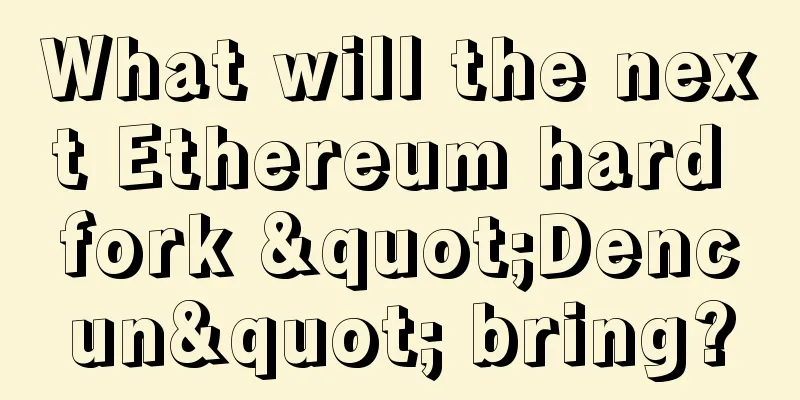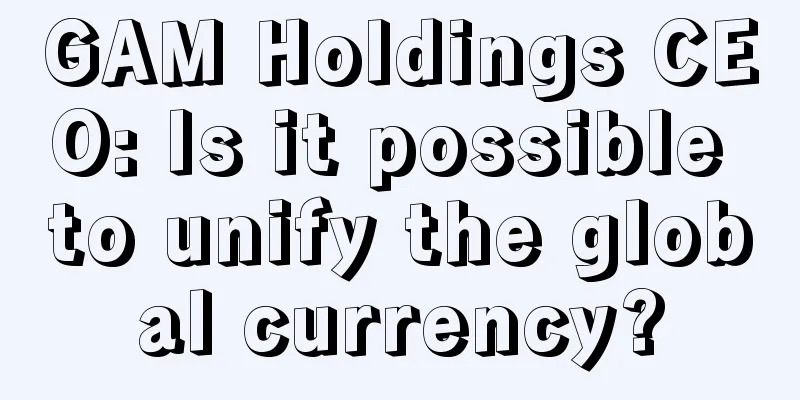What will the next Ethereum hard fork "Dencun" bring?

|
Over the past year, the Ethereum blockchain has successfully implemented some of the most important and technically significant upgrades, such as the Shapella upgrade (Shanghai upgrade). Now, developers are working hard to prepare "Dencun" (Cancun+Deneb), focusing on scalability through proto-danksharding (also known as EIP-4844). The Ethereum blockchain has undergone several improvements since 2014 that have helped it maintain its position as the top smart contract platform. Over the years, these upgrades have varied in focus, with features such as increased efficiency, account abstraction, proof-of-stake, and changes to fee structures, all of which will make Ethereum a near-instant decentralized computing layer for Web3. After the Shanghai upgrade, the latest update in April 2023 that enabled staking withdrawals, developers’ focus turned to improving Ethereum’s scalability, enabling faster transactions and lower fees through a technique called proto-danksharding. Sharding is a relatively mature scalability concept that involves breaking a blockchain into smaller parts or shards, with each shard handling a portion of the total transactions. This allows transactions to be processed in parallel, thereby increasing efficiency. Each shard has a subset of all nodes in the network that will process transactions for its shard. Some blockchains have already implemented sharding, namely Harmony and NEAR Protocol. Around 2020, Ethereum shifted to a rollup-centric roadmap and planned to use Layer 2 primarily for scaling, rather than increasing transaction times on the base layer. As a result, its sharding strategy shifted from creating more space for transactions to providing space for Blobs (data standard for post-sharding Ethereum) or simple storage space hosted by the mainnet but not further parsed. These blobs will store data from Layer 2, which can be cryptographically verified off-chain through zero-knowledge proofs and other techniques. Sharding is named after Dankrad Feist , the ethereum researcher who developed the concept, and its main innovation is the use of merged market fees. Currently, Ethereum blocks are constructed and proposed by the same source, which has led to the emergence of Maximum Extractable Value (MEV), which refers to the manipulation of the order of transactions by block validators in order to earn profits from them. For example, if there is a buy order for a token in a block, then the MEV sandwich attack causes the block validators to arrange the transactions in an order where they buy a large amount of tokens and increase the price, followed by the user's buy order to further increase the price, and finally the validator's sell order. Danksharding introduces a combined market fee and proposer/builder separation, which means that the roles of builder and proposer are separated. Builders will create blocks and bid for their inclusion, and one proposer per block will choose the order of transactions based on this bid, but cannot see the transactions in it. This will help prevent MEV attacks from stealing billions of dollars from Ethereum users. Proto-danksharding is the first step towards a full danksharding implementation, named after Ethereum researcher Proto Lambda. Its main goal is to introduce the blob data structure mentioned earlier. Storing data in blobs is much cheaper than Ethereum transaction data, as it is not compatible with Ethereum's execution engine, and it will be used for layer 2 transaction information. As a result, interactions with Ethereum layer 2 will become cheaper while retaining the security and decentralization benefits of mainnet Ethereum. One concern about introducing blobs is that it will significantly increase the size of Ethereum blocks. The hardware requirements for running nodes could become very expensive, leading to greater network centralization. To address this issue, future Ethereum upgrades may automatically delete blob information after a period of time, which will sacrifice Ethereum's ability to store complete blockchain history transactions, but as Ethereum founder Vitalik Buterin said: "The purpose of the Ethereum consensus protocol is not to guarantee permanent storage of all historical data. Instead, the purpose is to provide a highly secure real-time bulletin board and leave room for other decentralized protocols for longer-term storage." The introduction of proto-danksharding in EIP-4844 and Cancun-Deneb will pave the way for a full danksharding implementation, which will reduce fees, increase transaction times, and create a more efficient, MEV-minimized blockchain. The expected upgrade date has not yet been finalized, but is expected to be released before the end of the year. |
<<: Why did Worldcoin get $100 million in financing?
Recommend
People with island patterns on their marriage lines often have bad luck and will get divorced.
Will there be divorce if there is an island patte...
How to tell marriage from face reading? People with high foreheads have happy marriages.
If a person wants to thoroughly understand what k...
Which moles have high IQ in women?
Which moles have high IQ in women? A woman with a...
How to read the philtrum
The philtrum refers to the indentation in the mid...
Japanese banking group BTMU and Hitachi to develop blockchain check processing system
Bank of Tokyo-Mitsubishi UFJ (BTMU) and Hitachi a...
Coin Zone Trends: Bitcoin Price Trends Based on Big Data This Week (2016-06-29)
The market is divided, and the price of the curre...
Shanghai High Court: Bitcoin is virtual property and is subject to property rights laws and regulations
Overnight, Bitcoin (BTC) continued to fall to the...
Mole position and destiny: what does the three-star mole mean
Everyone has moles on their body to a greater or ...
What kind of facial features does a smart and capable woman have? Which women should not be offended?
In fact, in real life, many men don’t like smart ...
DeFi 丨How did YFI rise? How will it develop? -
DeFi 丨 How did YFI rise? How will it develop? New...
Why is Coinbase causing concentration risk as an ETF custodian?
Coinbase provides custody, trading, and financing...
Celebrity face analysis: Does Xu Jinglei have a good face?
As one of the earliest people to show her image a...
What is the Five Dews in Physiognomy
What are the five signs in physiognomy? In physio...
Recognize talents by appearance
Whether a person is talented or not cannot be tol...
Bitcoin mining machine Antminer S5 air-cooled mining machine to water-cooled tutorial
The tools needed to convert the air-cooled Antmin...









